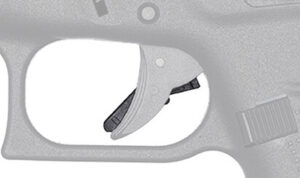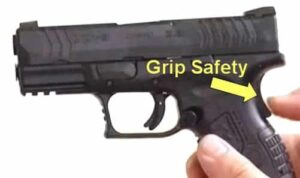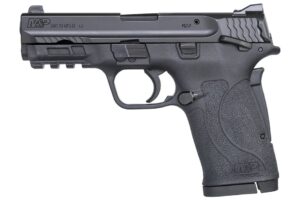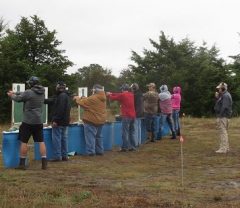While all handguns have various safety features built-in, the ones on a revolver do not require the user to do anything, so we will only discuss semi-automatics in this paper. Safety devices fall into five groups, with every semi-automatic having at least one of these features, and sometimes several. Two of them require no action from the user, but will be included here so you have a more complete view of the features. Please not that, as a safety protocol, you should never count on a safety working. Failure of a safety device is extremely rare, but anything mechanical can break. Never trust a gun, except in a combat situation, where you have no choice. In this paper, I will use the term “True Safety”, meaning that a 3 year old child would be stopped from firing the gun.
- Firing Pin Safety Block. Entirely internal, this feature makes it impossible for a gun to fire until the trigger is moved. Almost all handguns have this feature. NOT a True Safety.
- Drop Safety. While all handguns have this feature, there are several ways to implement it. Some are internal, and invisible to the user. On some guns, it appears as a small blade inside the trigger. It must be pressed as the trigger is pressed. The blade does not have enough mass to be moved by the kinetic force of dropping the gun. NOT a True Safety.

- Thumb Safety (AKA Frame Safety). A lever mounted on the left rear corner of the slide or the frame. Usually, up is engaged (on), and down is disengaged (off). The user swipes down with the dominant thumb as he/she presents the weapon. Ambidextrous guns will have this lever on both sides, for lefties. True Safety, probably.

- Decocker. This device looks like a thumb safety, but acts (on hammer-fired models only) to safely drop the hammer. There are two types, which are quite different.
Decocker only. After the hammer is dropped, the gun can still be fired, but with a much heavier trigger weight. Not quite a True Safety, but an impediment for a child.
Decocker + Safety. After the hammer is dropped, the safety is automatically engaged, so the gun cannot be fired without first disengaging the safety. True Safety.
Guns with decockers, though uncommon, are harder to understand and use than other types of guns. Police never use these.
- Grip Safety. A spring-loaded lever on the back of the grip, this safety is engaged by default, and is disengaged by the action of acquiring a proper grip on the gun. Dropping the gun automatically puts it back in safe mode. This was developed in 1910, and has been used for 112 years on the “1911” pistol. Smith & Wesson and Springfield Armory use it on some models, but it is still fairly uncommon. A True Safety, unless a child figures out how it works.

The pistol above has both a drop safety and a grip safety, which are redundant. Marketing.

This pistol has both a thumb safety and a grip safety.
Confused yet? Keep reading.
Hammer-fired guns (old school) have more sensitive triggers, so they will always have a thumb safety or decocker, and sometimes both.
Striker-fired guns cannot have a decocker, and seldom have a thumb safety. That is considered optional, for these reasons:
- Striker-fired guns are harder to fire by accident, as cocking of the mechanism is not complete until the trigger is moved.
- Gun safety is not the responsibility of the gun, but of the user. Your only true safety is your training. Anything else is a dangerous crutch.
- Police never carry guns with safeties. There is a reason. Simpler guns are easier to use in a crisis. Your brain works faster than your thumb.
